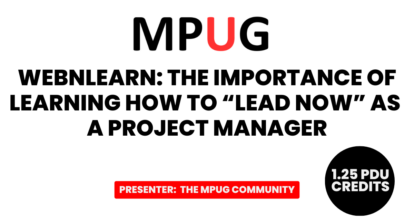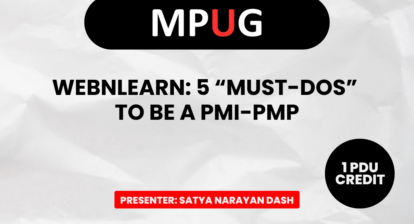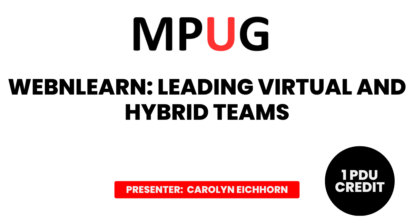Upcoming Movements in Project Management and How You Can Prepare
We started to discuss in Part 1 of this article what project management opportunities are ahead and how PMs can be getting ready for them. I pointed out that the majority of small to medium businesses (SMB) are 10 – 20 years behind the times when it comes to technology and that these companies would benefit from bringing in a project process consultant (PPC).
Diagnostic Affiliates of Northeast (DAN)
Let’s consider Diagnostic Affiliates of Northeast (DAN) as an example. Because of the their ailing legacy infrastructure and support systems, what pained DAN the most was the lack of in-house expertise and a growing sense of not knowing what to do as their business grew in depth and breadth. After researching a number of vendors that specialize in health systems, DAN decided to go with the popular Patient Intake Applications Suite (PIAS) from Phreesia which uses a Software as a Service (SaaS) model. This on-demand software is typically assessed by users using a thin client (a lightweight computer built to connect to a server farm from a remote location) and web browser. The choice is a common one for office systems, accounting, and customer relationship management. Phreesia (www.phreesia.com) is a healthcare software company founded in 2005 with a background of software analytics and engineering. Their future growth potential looks great!
Phreesia brought in a Project Process Consultant (PPC) to study DAN’s current systems. The consultant worked with the client to decide what processes they wanted to keep, what could be configured within the modular PIAS, and what new processes would replace the legacy processes. Some of the immediate benefits of the new installed system are:
- Phreesia had a number of different thin client check-in devices to choose from, and DAN decided to use only the PhreeisaPad shown in mustard in Figure 1.4. This consumer-friendly tablet includes a credit card reader and allows patients to update their information, sign consent forms, and pay copays securely from their seat within the waiting room.
- Going a step beyond, current patients don’t have to touch the PhreeisaPad if they want to avoid picking up germs from previous patient handlers. They can go online from their own device to set up an appointment and update any information that has changed. Once logged in, users have access to additional information like left messages, medications, results, appointments, health records, etc.
- Simplifying arrival by decreasing paper clipboard waiting time has the benefit of freeing up administrative staff for higher valued tasks. It also leads to patients having more productive time with the medical staff.
- PIAS’s includes a suite of reports called “Analytics” which helps DAN to understand their intake processes and monitor performance like patient payments and operational health.
Consider the value of the PPC in this case, and how he/she could be paired up with the Strategy Project Manager (more on that below) by selecting a process to pick the right projects so the organization can be successful.
Business Analytics
Business analytics (BA) depends on getting large amounts of high quality data across different systems (e.g., Oracle, IBM, and/or Azure databases) and deciding what subsets of data adds reporting value to the organization. This value can be used to learn “insights” from past performance, so you can do better business planning and be more competitive. Henry Ford used BA to help plan and build his assembly lines, and many companies use it today for customer loyalty programs. Another example is Microsoft’s Power BI (Business Intelligence) Desktop and their similar ecosystems (e.g., Power BI Pro), which is really a BA service where end users can create enterprise reports, live dashboards, and rich visualizations themselves versus depending on their IT department. Unless they are trained, most end users won’t have the expertise to work across different systems and will need an experienced Business Analysis Consultant (BAC) to help them accumulate the information (i.e., actionable intelligence) they need to share and run their business more effectively. This is an area all PM’s should consider in future career planning.
Strategy, Strategy, Strategy
Strategic Project Managers (SPMs) and Chief Project Officers (CPOs) will soon be breaking the doors down to get into the C-suite of any organization that is driven by information and technology. This person will have to know the business, be an experienced PM, be part of the portfolio decision making process, and be an effective innovator and communicator. Obviously this person has to be a skilled leader (e.g., PMO director, CIO, or COO), highly respected, and have good relationships with stakeholders! Equally important, this person would be an influential collaborator in defining and helping to deliver the organization’s strategy.
The SPM or CPO serves as a crucial interface between the C-suite and the organization in translating strategy and goals into projects. He/she understands the processes and advantages that need to take place for the project to be successful. Furthermore, this person can help the organization pick the right projects.
End-to-End Project Managers
The previous job topics discussed in this article show where projects may transition from the PM to the business owner. End-to-end PMs go to the next level by taking ownership of a new product or service. In fact, the PM becomes responsible for providing the benefits. This is actually happening in China and slowly being embraced by Western countries. A good example of this is a Chinese company, The Alibaba Group (NYSE symbol: BABA), which is one of the world’s largest e-commerce, retail, internet, AI, and technology companies. They are fast to market being an Agile-project-based organization and quickly converting ideas into products and services. It’s a much more innovative and complete way to view PMs and project management, in general. Keep in mind these End-to-end PMs need to have good communication/salesmanship skills and be able to think strategically because they may be taking on more future projects than fit into their work domain.
These types of fast-to-market organizations are looking for leaders that have less technical expertise and more end-to-end expertise with strong facilitation skills. These PMs usually develop a stronger business understanding with commercial insights, which should open the door for them moving up to the executive levels of their organizations. This type of environment could become the future direction of project management, and to get there, PMs need to get out of their comfort zones, adapt, and start playing more leadership oriented roles. It should be noted, however, that in order to go in this direction, organizations need to become more flexible overcoming silos and traditional organizational structures so the work done is project-based!
Summary
In the last 30 – 40 years, the growth of technology has been mind boggling! Unfortunately during this period of rapid growth, processes were left far behind. For example, many software developers are still using the methodologies (e.g., Waterfall) from post WWII (these approaches were derived from heavy manufacturers using large mainframes and don’t match up with today’s technology). Traditional projects suffer from one major problem—scope bloat or having too many features that add little or no value to a newly implemented system. Consider Microsoft Word. It may have about two hundred features in it, but how many are you actually using on a regular basis? Maybe a dozen? When a new version of Microsoft Word comes out, it will have many new features that you probably won’t be interested in or use. So, there will be no immediate rush to upgrade.
The point is that technology is advancing so rapidly that it’s beginning to outpace the public’s capacity to fully understand it ramifications. This means that sometimes inventing the future can cause internal problems for some large technology companies. These companies may have to reboot their own culture and/or use project process consultants to update their delivery systems and expand product lines to have a bigger retail footprint.
Project managers need to change with the times to become champions of these changes, and while they are at it, modernize project management. A focus on the areas we’ve discussed in this two part article, can help PMs future-proof themselves and differentiate from others that have a similar IQ’s and education. Overall, look at your soft skills, increase your professional networking, have a positive attitude, and be resilient. All the “reshaping” PMs need to have is the ability to help able set a strategic direction for their organization, constantly improve their communications, and learn sales skills to help build up your toolkit.
As mentioned in the above, companies are beginning to realize they want to hire people that have knowledge of their business areas, as well as project management skills. This future is bright and right around the corner. Start getting ready now!










Jigs Gaton
Hi Ronald, I am also retired from IBM (left in ’98) and I am enjoying your series…will most likely reference some of your points in my own series now ongoing: https://mpug.com/articles/all-about-work-for-project-managers/ Cheers, Jigs